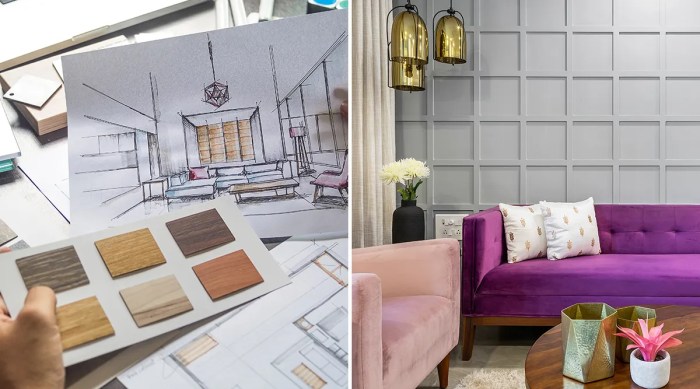Diving into the realm of metal siding for houses, this introduction sets the stage for an insightful journey into the benefits, types, installation process, cost considerations, and maintenance of this versatile material. From its durability to energy efficiency, metal siding offers a range of advantages that make it a popular choice among homeowners looking for both style and practicality.
Let's unravel the mysteries and marvels of metal siding for houses.
As we delve deeper, we'll explore the various types of metal siding, the intricate installation process, cost considerations, and essential maintenance tips to keep your metal siding looking pristine for years to come.
Benefits of Metal Siding
Metal siding offers numerous advantages for houses, making it a popular choice among homeowners looking for durability and energy efficiency.
Durability of Metal Siding
Metal siding is known for its exceptional durability, able to withstand harsh weather conditions such as heavy rain, strong winds, and even hail. Unlike other materials like wood or vinyl, metal siding does not rot, warp, or crack over time, ensuring a long-lasting exterior for your home.
Energy Efficiency Benefits
Metal siding can also contribute to energy efficiency in your home. With proper insulation and installation, metal siding helps regulate indoor temperatures, reducing the need for excessive heating or cooling. This can lead to lower energy bills and a more comfortable living environment throughout the year.
Types of Metal Siding
Metal siding offers a variety of options for residential properties, each with its unique characteristics and benefits. Let's explore the different types of metal siding available, including aesthetic options and maintenance requirements.
Steel Siding
Steel siding is a popular choice for its durability and strength. It is available in a wide range of colors and finishes, including textured, smooth, and wood grain patterns. Steel siding requires minimal maintenance, with occasional cleaning to remove dirt and debris.
Aluminum Siding
Aluminum siding is lightweight and corrosion-resistant, making it a great option for coastal areas. It comes in a variety of colors and can be painted to achieve a custom look. Aluminum siding is easy to maintain, requiring periodic cleaning and inspection for any signs of damage.
Zinc Siding
Zinc siding is known for its longevity and resistance to corrosion. It develops a natural patina over time, adding a unique aesthetic to the property. Zinc siding requires little maintenance, with occasional cleaning to preserve its appearance.
Copper Siding
Copper siding is a premium option known for its luxurious appearance and durability. It develops a striking patina over time, giving the property a distinctive look. Copper siding is low maintenance, with periodic cleaning to maintain its luster.
Corrugated Metal Siding
Corrugated metal siding is a versatile option that adds a modern industrial look to residential properties. It is available in various colors and finishes, including matte, glossy, and textured surfaces. Corrugated metal siding is durable and requires minimal maintenance, making it a popular choice for contemporary homes.
Installation Process

Metal siding installation on a house involves several key steps to ensure a successful and long-lasting result. From preparing the house exterior to gathering the necessary tools and materials, each phase is crucial in achieving a professional finish.
Preparing the House Exterior
Before installing metal siding, it is essential to prepare the house exterior properly. This includes removing any existing siding, repairing damaged areas, and ensuring a clean and smooth surface for the new material to adhere to. Additionally, checking for proper insulation and moisture barriers is crucial to prevent any future issues.
- Remove old siding carefully to avoid damage to the underlying structure.
- Repair any cracks, holes, or damage to the exterior walls before proceeding with installation.
- Ensure the surface is clean and free of debris, dirt, or mold that may affect the new siding.
- Inspect and replace any insulation or moisture barriers to improve energy efficiency and protect against water damage.
Tools and Materials Needed
To successfully install metal siding, you will need a specific set of tools and materials to facilitate the process and achieve professional results.
- Measuring tape and chalk line for accurate measurements and layout.
- Tin snips or electric shears for cutting metal panels to the required size.
- Hammer, nails, or a nail gun for securing the siding in place.
- Screws or rivets to fasten the metal panels to the exterior walls.
- Ladder or scaffolding for reaching higher areas of the house safely.
- Protective gear such as gloves, safety glasses, and work boots to ensure personal safety during installation.
Cost Considerations
Metal siding is a popular choice for homeowners due to its durability and low maintenance requirements. However, the cost of metal siding can vary depending on several factors. In this section, we will compare the cost of metal siding with other popular siding materials, detail factors that can influence the overall cost of metal siding installation, and share tips for budgeting and cost-saving strategies when choosing metal siding for a house.
Cost Comparison with Other Siding Materials
When comparing the cost of metal siding with other popular siding materials like vinyl, wood, and fiber cement, metal siding tends to fall somewhere in the middle. While it may be more expensive than vinyl siding, it is often more cost-effective than wood or fiber cement siding in the long run due to its durability and low maintenance requirements.
Factors Influencing the Cost of Metal Siding Installation
Several factors can influence the overall cost of metal siding installation, including the size of the house, the type of metal siding chosen, the complexity of the installation process, and any additional features or customization options. Additionally, labor costs and the location of the house can also impact the total cost of the project.
Tips for Budgeting and Cost-Saving Strategies
- Get multiple quotes from different contractors to compare prices and services.
- Consider opting for pre-painted metal siding to save on painting costs.
- Choose a simpler metal siding profile to reduce material and installation costs.
- Plan the installation during the off-season to potentially negotiate lower prices with contractors.
- Properly maintain your metal siding to avoid costly repairs or replacements in the future.
Maintenance and Care
Metal siding is a durable and low-maintenance option for homeowners. To ensure that your metal siding stays in good condition and retains its aesthetic appeal, it is important to perform routine maintenance tasks and address any issues promptly.
Routine Maintenance Tasks
- Regularly inspect the metal siding for signs of damage, such as dents, scratches, or corrosion.
- Clean the siding at least once a year to remove dirt, debris, and mildew that can accumulate over time.
- Trim any vegetation near the siding to prevent damage and ensure proper ventilation.
- Check the caulk and sealant around windows, doors, and other openings to prevent water infiltration.
Cleaning Methods
Depending on the type of metal siding you have, there are specific cleaning methods to follow:
- Aluminum Siding:Use a mixture of mild detergent and water to clean aluminum siding. Avoid abrasive cleaners that can scratch the surface.
- Steel Siding:Use a solution of water and mild detergent to clean steel siding. Rinse thoroughly with water to prevent streaking.
- Galvanized Steel Siding:Clean galvanized steel siding with a mixture of vinegar and water to remove rust spots. Rinse well after cleaning.
Addressing Common Issues
Common issues like dents or scratches on metal siding can be addressed with the following steps:
- For small dents, use a rubber mallet to gently tap the area back into place. Larger dents may require professional repair.
- To repair scratches, clean the area thoroughly and apply touch-up paint that matches the color of the siding.
- If you notice signs of corrosion, sand the affected area and apply a primer and paint to protect the metal from further damage.
Ultimate Conclusion
In conclusion, metal siding for houses stands as a durable, energy-efficient, and aesthetically pleasing option for homeowners seeking a modern touch to their abode. By understanding the benefits, types, installation process, cost considerations, and maintenance requirements, you can make an informed decision about incorporating metal siding into your home.
Embrace the durability and beauty of metal siding and transform your house into a stylish sanctuary.
FAQ Insights
What are the advantages of using metal siding for houses?
Metal siding offers durability, energy efficiency, and aesthetic appeal, making it a popular choice for homeowners.
Are there different types of metal siding available for residential properties?
Yes, there are various types of metal siding with different colors, finishes, and maintenance requirements to suit different preferences.
What is the installation process like for metal siding?
The installation process involves preparing the house exterior, using the right tools and materials, and following specific steps to ensure a successful installation.
How does the cost of metal siding compare to other siding materials?
Metal siding may have different costs compared to other materials, and factors like size, type, and installation can influence the overall cost.
What maintenance tasks are required for keeping metal siding in good condition?
Routine maintenance tasks include cleaning, addressing dents or scratches, and ensuring the siding remains in top condition for longevity.









